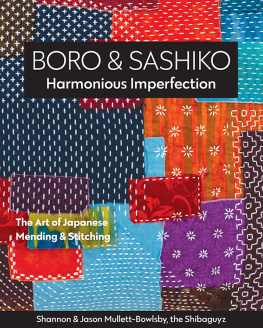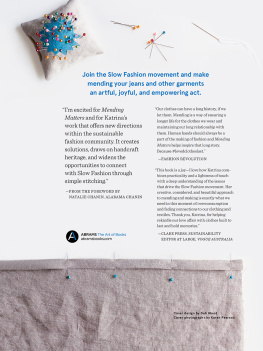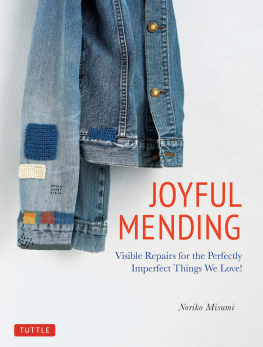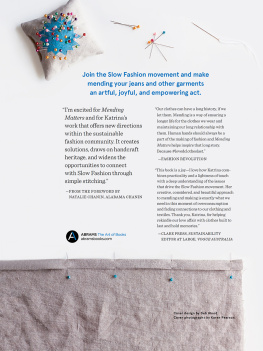Gina Harper - Denim Mending + Visible Mending for Beginners: 2-in-1 Compendium for Mending Denim, Knitted Fabrics, and Other Materials
Here you can read online Gina Harper - Denim Mending + Visible Mending for Beginners: 2-in-1 Compendium for Mending Denim, Knitted Fabrics, and Other Materials full text of the book (entire story) in english for free. Download pdf and epub, get meaning, cover and reviews about this ebook. year: 2019, publisher: PublishDrive, genre: Romance novel. Description of the work, (preface) as well as reviews are available. Best literature library LitArk.com created for fans of good reading and offers a wide selection of genres:
Romance novel
Science fiction
Adventure
Detective
Science
History
Home and family
Prose
Art
Politics
Computer
Non-fiction
Religion
Business
Children
Humor
Choose a favorite category and find really read worthwhile books. Enjoy immersion in the world of imagination, feel the emotions of the characters or learn something new for yourself, make an fascinating discovery.
- Book:Denim Mending + Visible Mending for Beginners: 2-in-1 Compendium for Mending Denim, Knitted Fabrics, and Other Materials
- Author:
- Publisher:PublishDrive
- Genre:
- Year:2019
- Rating:5 / 5
- Favourites:Add to favourites
- Your mark:
Denim Mending + Visible Mending for Beginners: 2-in-1 Compendium for Mending Denim, Knitted Fabrics, and Other Materials: summary, description and annotation
We offer to read an annotation, description, summary or preface (depends on what the author of the book "Denim Mending + Visible Mending for Beginners: 2-in-1 Compendium for Mending Denim, Knitted Fabrics, and Other Materials" wrote himself). If you haven't found the necessary information about the book — write in the comments, we will try to find it.
If you want to save your favorite jeans or sweater from the trash pile, then keep reading...
Have your favorite jeans worn down, and youre afraid that you will have to let them go?
Did you accidentally ruin your favorite sweater, and are desperate not to throw it away?
Are you looking to give your old denim or thrift store find a fresh breath of life?
Are you tired of using the same zig-zag pattern for all mending?
I, the author, present to you the solution to your problems.
Inside this book, I will teach you how to mend denim, knitwear, and other fabrics using classic mending techniques.
Note: This book has 2 manuscripts
Book 1:Denim Mending for Beginners: Patch and Repair your Favorite Denim with Classic Japanese Stitching
Book 2:Visible Mending for Beginners: How to Mend Knitted Fabrics and Other Materials with an Artistic Touch
Inside this book you will discover:
- 1 jean repair pro-tip that professional jean tailors will never reveal to you
- A versatile and robust mending technique that can repair your favorite sweater
- How to mend denim easily by hand, even if it is your first time, by using 3 classic Japanese stitching techniques
- How to re-enforce the inner thigh of your jeans, with a simple but effective 8-step method
- 1 secret tool that will make stitching easy, even if its your first time
- The secret to finding and mending thrift store clothing
- How to mend your favorite denim (and avoid cutting them into shorts) using the sashiko method
- How to patch jeans while keeping the distressed look
- How to hem jeans while keeping the original hem
- The biggest mistake you could be making when choosing a fabric to patch your denim
- 1 mending technique that blends both mending and embroidery, giving you the best of both worlds
- 1 simple but crucial tip that will make patching easier for you
- The #1 stitching technique you should use when repairing pillowcases
- A mending technique from India, that is considered a dying art, and could be lost to the ages within our lifetime (its also perfect for mending your socks)
This book also comes with 2 free bonuses:
- 10 handy hacks to avoid small mistakes and snags while mending
- 10 jean repair hacks that will breathe new life into your worn jeans
Mending is an opportunity to let your creativity flourish.
You can even experiment with clothes that you find at thrift stores, to create some unique and interesting garments!
But what if you have never done stitching before?
This book has been designed to be effective for the complete beginner.
Even someone who has never put a thread into a needle can start mending.
Hurry before it is too late and you have to toss your favorite denim or sweater into the trash pile!
Note: This book does not have any pictures
Buy this book and save your favorite clothes now!
P.S. Most people regret throwing out their favorite piece of clothing, after realizing that it could have been given a new life with mending. Learn before its too late.
Gina Harper: author's other books
Who wrote Denim Mending + Visible Mending for Beginners: 2-in-1 Compendium for Mending Denim, Knitted Fabrics, and Other Materials? Find out the surname, the name of the author of the book and a list of all author's works by series.

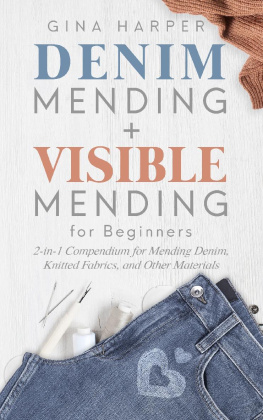

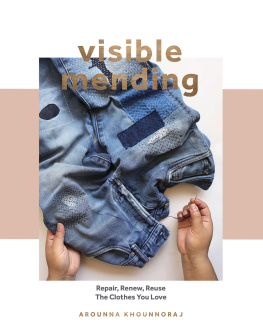
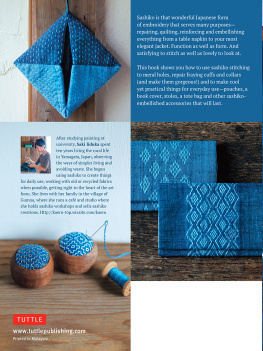
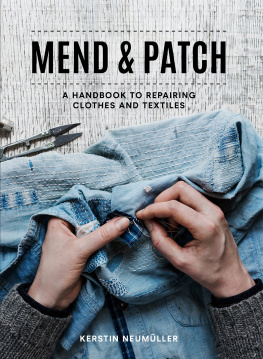
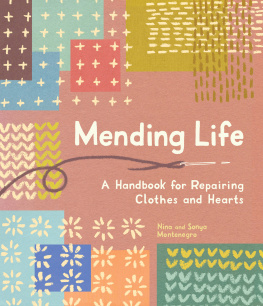
![Noriko Misumi [ミスミノリコ] - Mending with Love: Creative Repairs for Your Favorite Things](/uploads/posts/book/306555/thumbs/noriko-misumi-mending-with.jpg)
